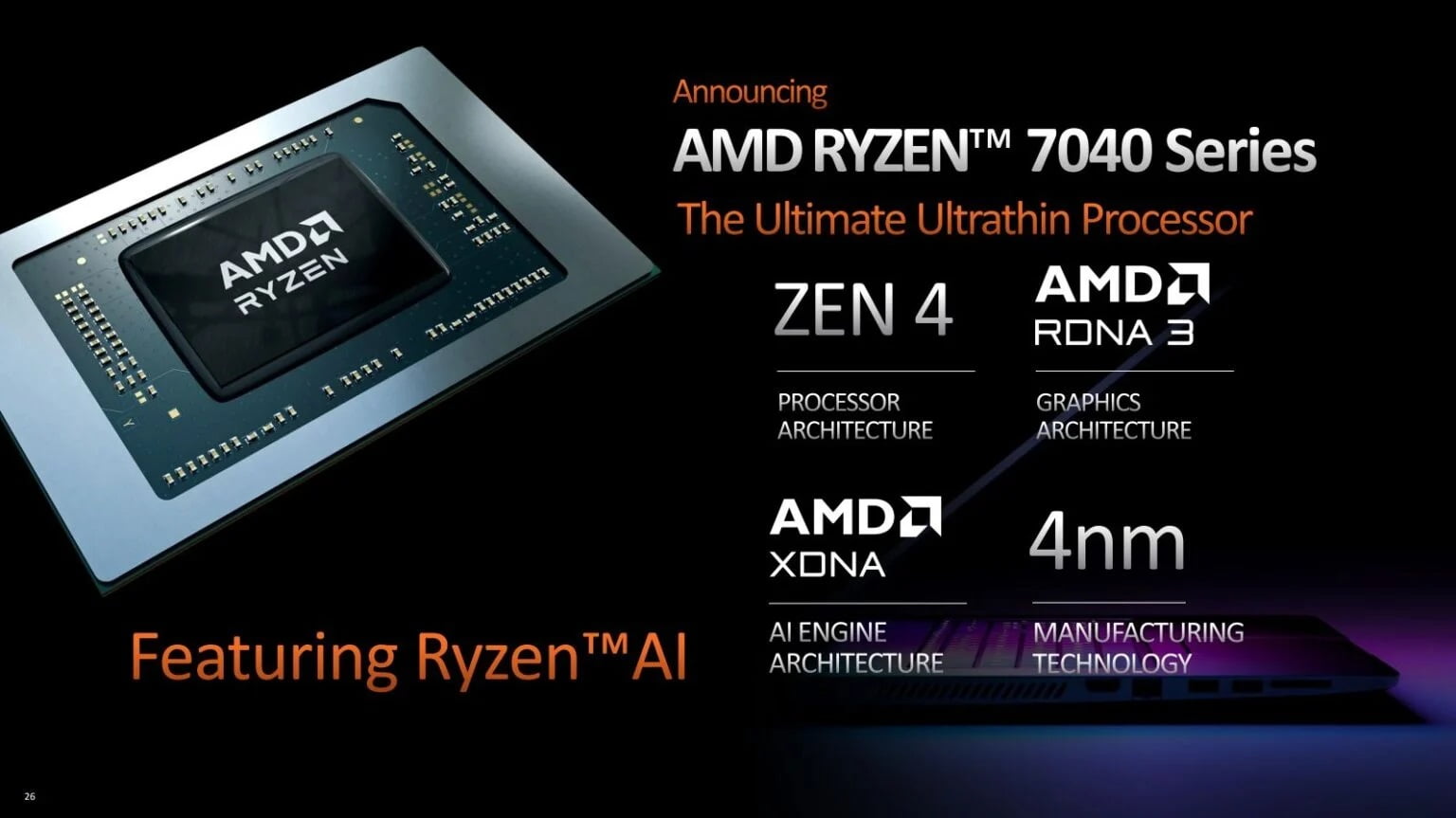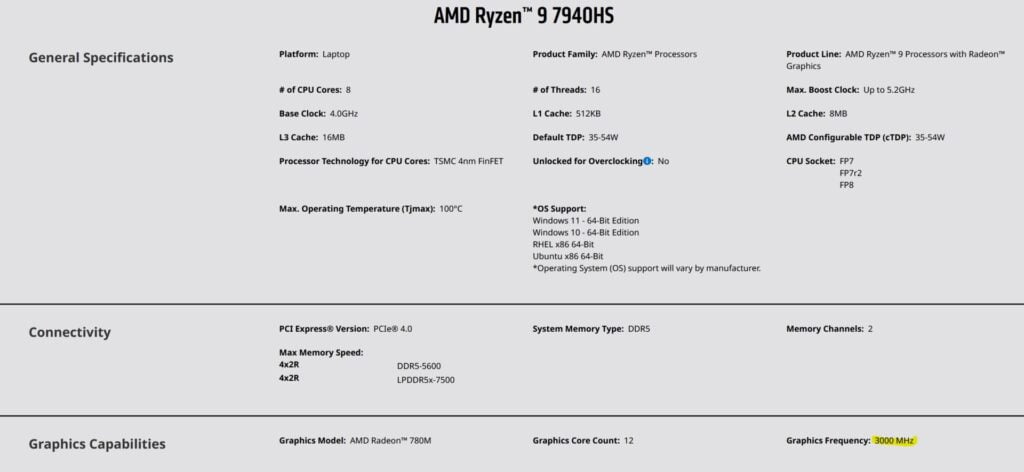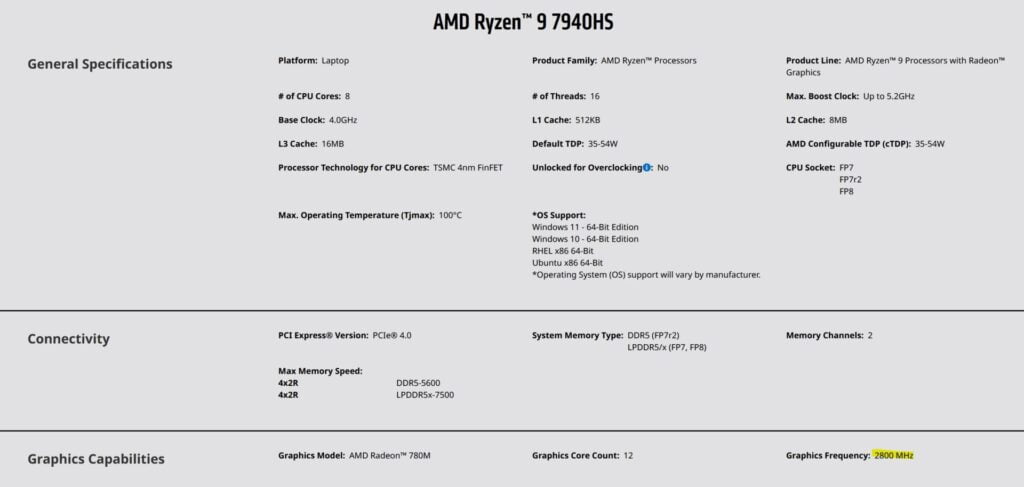AMD Ryzen 7000HS: Why the Fastest iGPU Clocks Differ by Region

The integrated RDNA3 GPU of the Ryzen 7000HS series notebook processors has recently become the subject of much discussion and debate, thanks to an intriguing discovery made by Twitter user @SquashBionic. According to this intrepid individual, it seems that AMD may have misled customers when it comes to the clock speed of their iGPUs.
Initially, AMD had claimed that the integrated RDNA3 GPU of the Ryzen 7000HS series notebook processors could clock at up to 3 GHz, a seemingly impressive feat by any measure. However, a closer examination of the information provided by AMD reveals that the reality may be somewhat less impressive than initially advertised.


In fact, AMD has since altered the information on their website, with the the iGPUs of the Ryzen 9 7940HS, Ryzen 7 7840HS, and Ryzen 5 7640HS processors now clocking in at 200 MHz lower than originally stated. The situation at hand is quite intriguing, as it leads to some inquiries about the precision and dependability of the data that AMD has shared. It also suggests that the true capabilities of these processors may be somewhat less impressive than previously thought.
It is important to highlight that the matter seems to be limited to regions outside of China, as there have been no indications of similar concerns with regards to the clock speed of these processors within the country. According to reports, the iGPU of the Ryzen 7000HS series notebook processors clocks at the full tact specified by AMD, suggesting that the issue may be confined to certain markets or regions.
Despite these discrepancies, there is no denying that the Radeon 780M remains an impressive feat of engineering and technology. In fact, it is likely one of the fastest iGPUs of all time, showcasing the incredible potential of modern processors and the power of innovative design and engineering.
Ryzen 9 7940H with 3 GHz GPU for China Only
According to recent reports, it appears that AMD may be planning to release the Ryzen 9 7940H exclusively in China, where a 3 GHz GPU clock is still very much on the table. However, for regions such as Europe, North America, and Japan, AMD has opted for HS variants with a reduced GPU clock.
AMD Ryzen 7040HS vs AMD Ryzen 6000HS

Despite the buzz surrounding the new product strategy, insiders and experts remain perplexed by its underlying reasons. As they scratch their heads, speculation abounds about its broader implications for the tech industry. Could this move be a sign of a broader shift in the market, or simply an attempt by AMD to cater to different regional preferences and market demands?
One thing that is clear, however, is the impressive performance and technological capabilities of the Ryzen 7040HS series. Equipped with the powerful Phoenix APU, this monolithic chip boasts up to 8 Zen 4 cores and the aforementioned RDNA 3 GPU, showcasing the incredible potential of modern processors and the power of innovative design and engineering.
In contrast, the 7045HX series is based on the Dragon Range and uses a chiplet design, with up to 16 Zen 4 cores and a lower-performance RDNA 2 GPU that runs at a maximum of 2.2 GHz and offers only 2 CUs. While still impressive by most standards, the difference in capabilities between the two series is certainly worth noting.
Looking ahead, it seems that the first notebooks with Ryzen 7040HS are set to hit the market in March, while variants with 7045HX were originally expected in February, but it seems that we are still some distance away from their release. In the meantime, some models with Ryzen 7030U or 7020U are available, offering lower levels of performance and power consumption but still representing a viable option for some users.